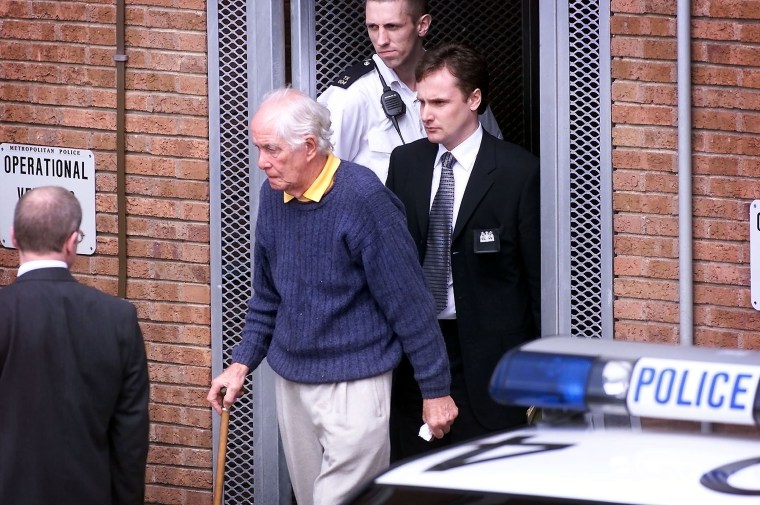The national manhunt for terror suspect Daniel Abed Khalife, who escaped from Wandsworth Prison on Wednesday, is into its third day.
The 21-year-old former British Army soldier is reported to have escaped from the prison kitchen in his cook’s uniform by strapping himself to the underside of a delivery van.
Police have refused to rule out that Khalife has left the country, or that he had outside help to escape. The incident has led to extra security checks at major transport hubs, with both UK and international security services involved in the hunt.
How many people escape from UK prisons?
Data from the Ministry of Justice shows that UK prison escapes have declined significantly over the last three decades, with just three escapes since 2019, not including Khalife’s.
This data includes all prisoners who “unlawfully gain their liberty by breaching the secure perimeter of a closed prison, or if during prison staff escort, overcome the control of escorting staff and leave the escort” for more than 15 minutes, as well as those who escape for less than 15 minutes and commit an offence.
The figures come from the HM prison and probation service annual digest, and break down as follows:
- 1995-96 – 88 escapes
- 1996-97 – 53
- 1997-98 – 33
- 1998-99 – 35
- 1999-2000 – 38
- 2000-01 – 19
- 2001-02 – 26
- 2002-03 – 17
- 2003-04 – 16
- 2004-05 – 20
- 2005-06 – 11
- 2006-07 – 8
- 2007-08 – 6
- 2008-09 – 5
- 2009-10 – 5
- 2010-11 – 2
- 2011-12 – 4
- 2012-13 – 1
- 2013-14 – 4
- 2014-15 – 1
- 2015-16 – 5
- 2016-17 – 7
- 2017-18 – 4
- 2018-19 – 3
- 2019-20 – 2
- 2020-21 – 0
- 2021-22 – 1
The most famous UK prison escapes
Perhaps the most famous prison escape in British history came in 1965, when train robber Ronnie Biggs escaped from the very same institution Khalife did – HMP Wandsworth.
Biggs had served just 19 months of a 30-year sentence for his role in the Great Train Robbery, during which a gang of 15 stole £2.61m – equivalent to roughly £61m today – from a Royal Mail train heading from Glasgow to London.
He was able to scale the prison walls using a ladder made from rope before fleeing in a removal van. He remained on the run in Australia and Brazil for 36 years, before being arrested after voluntarily returning to the UK in May 2001.
Biggs was released from prison in August 2009 on compassionate grounds after contracting pneumonia and died in December 2013.

Former British spy George Blake escaped from Wormwood Scrubs in 1966 five years into a 42-year sentence he was handed after being exposed as a Russian double agent. Like Biggs, he used a rope ladder to scale the prison walls.
Blake fled to the then Soviet Union, and is believed to still be living in Russia.
Murderer John Straffen escaped from Broadmoor psychiatric hospital in 1952 and killed a five-year-old local girl called Linda Bowyer before he was recaptured hours later. He was convicted of her murder and sentenced to death, though this was later reduced to life imprisonment. He died in 2007 aged 77.
The last famous escape involving terrorism inmates came in 1994 when IRA prisoners escaped from Whitemoor prison. London gangster Andy Russell and IRA member Paul Magee were among six who escaped with the help of a gun that was smuggled into the prison. They were all recaptured within minutes.
IRA prisoners also made an escape in 1983, with 38 inmates – some with murder convictions – breaking out of Maze prison in County Antrim.
The men used smuggled weapons to take prison guards hostage. One officer ended up being killed and another was seriously injured.
Fifteen of the men were recaptured that same day, with most of the others also brought back to prison. The UK Government dropped extradition requests for three of them as part of the Good Friday Agreement in 2000.
Why was Khalife in prison?
Khalife was on remand in Wandsworth Prison awaiting trial in relation to terrorism and Official Secrets Act offences, including preparing an act of terrorism and collecting information useful to an enemy. He was discharged from the Army in May of this year.
At a court appearance at the Old Bailey in July, Khalife denied all the charges against him.
He is accused of stealing personal information about soldiers from the Ministry of Defence Joint Personnel Administration System in 2021, which was “likely to be useful to a person committing or preparing an act of terrorism”.
Khalife is also accused of breaking the Official Secrets Act by acting against the “safety and interests of the state” and allegedly collecting information which would be “useful to the enemy”.
The court heard he also allegedly left fake explosive devices at the Ministry of Defence base in Stafford in the hope of “inducing in another the belief the item was likely to explode or ignite”.
An insider at MI5, the UK’s domestic intelligence agency, told i that Khalife is alleged to have been passing secrets to a hostile state and acting on the orders of an enemy to the UK, adding that he may have been groomed by a “foreign state” while he served in the Army.
They said the most serious offences Khalife is accused of were related to his work for a hostile state rather than any immediate physical threat he posed to the public.
The source wouldn’t name the state in question, citing national security, but a report in the Daily Mail said Mr Khalife has been accused of spying for Iran.
This post was originally published on this site be sure to check out more of their content.







